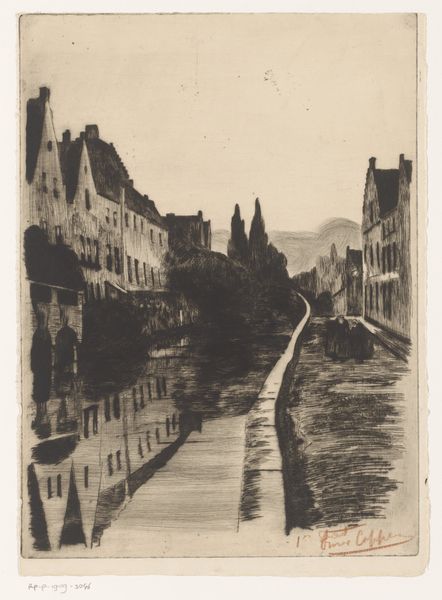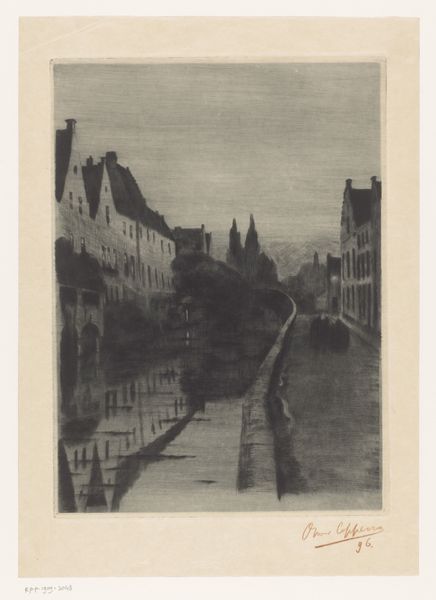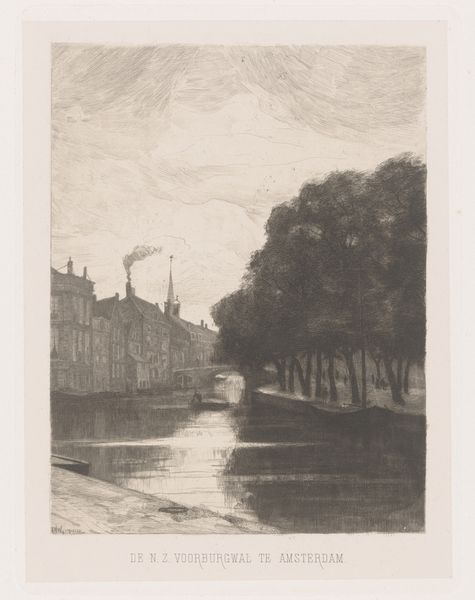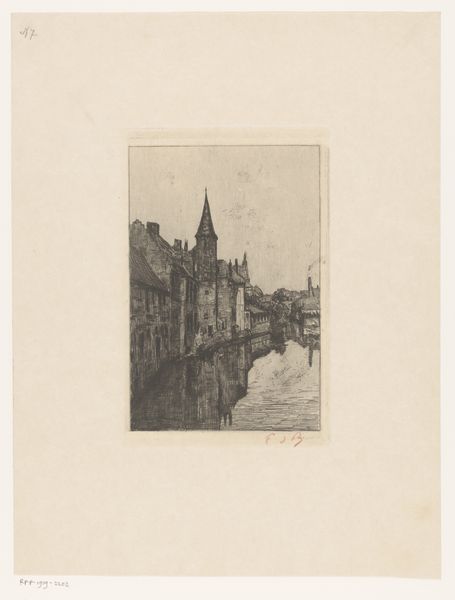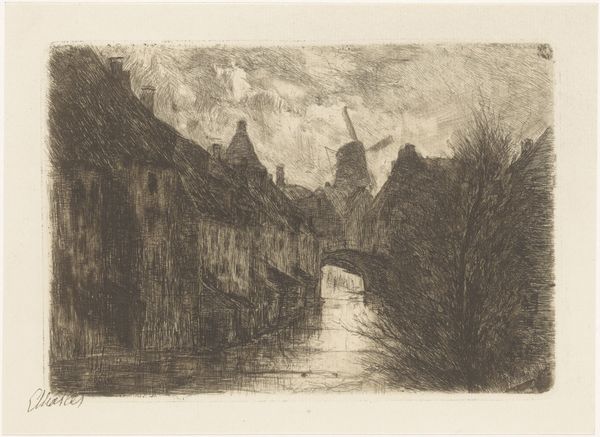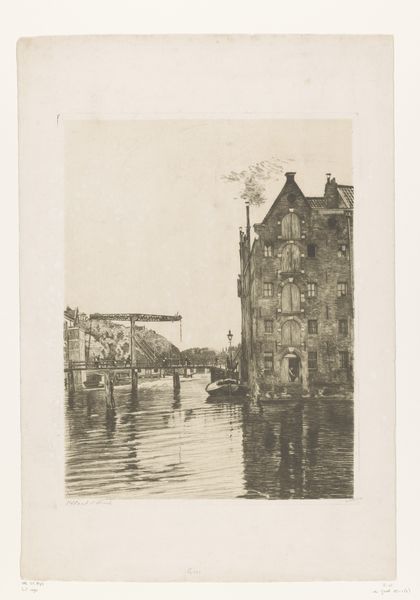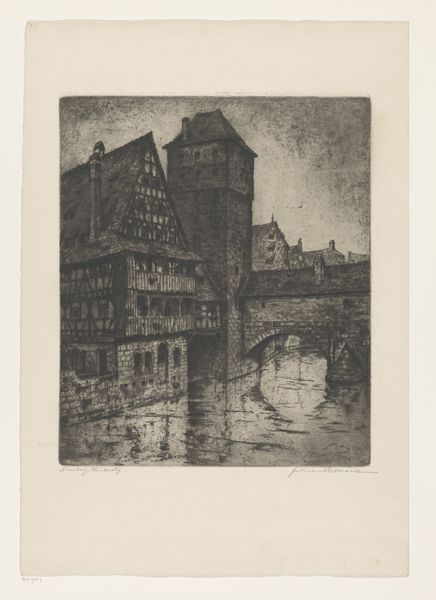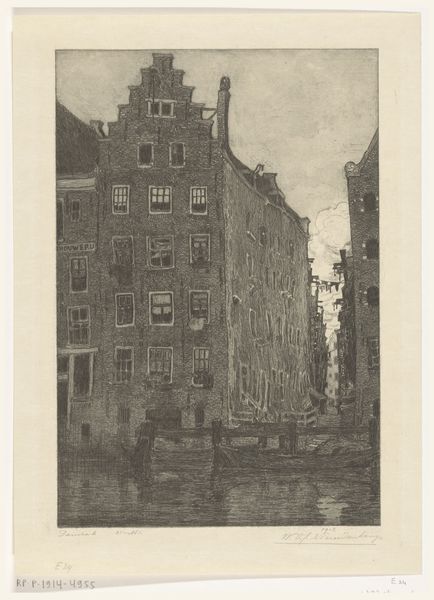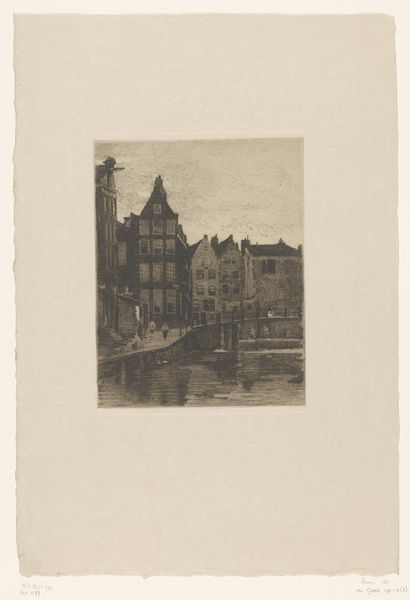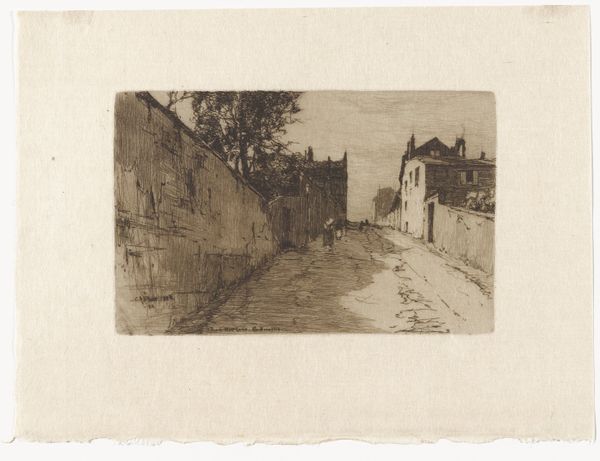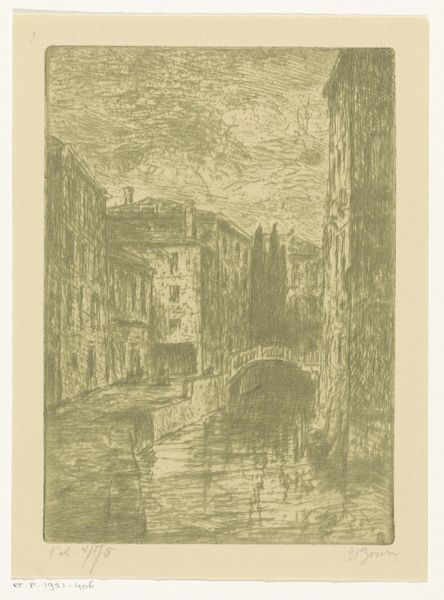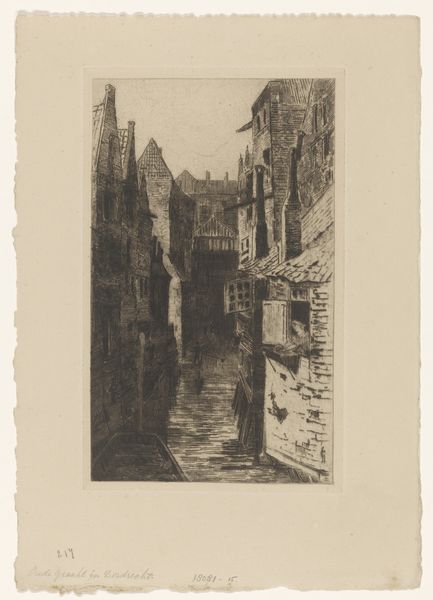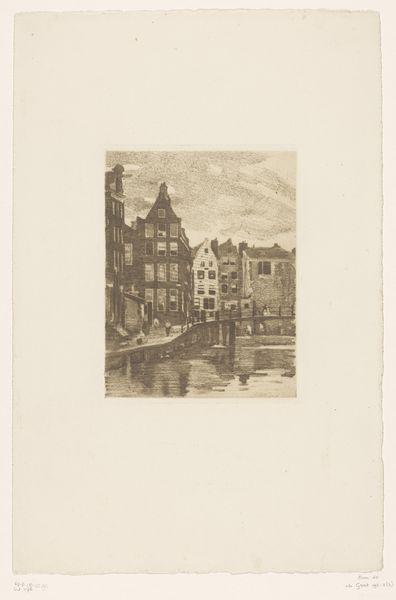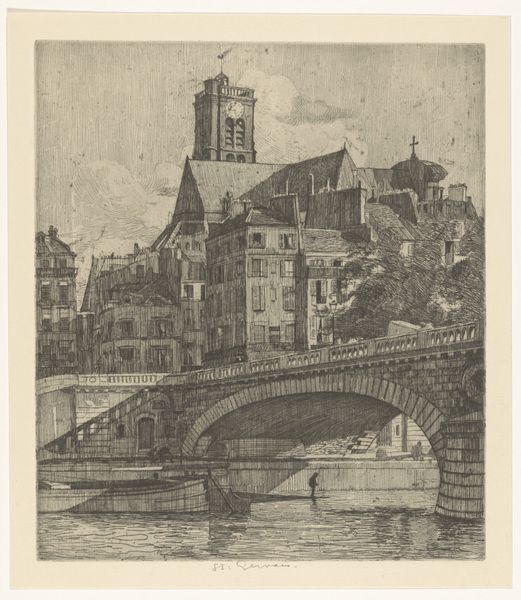
print, etching
# print
#
etching
#
landscape
#
charcoal drawing
#
symbolism
#
cityscape
#
watercolor
#
realism
Dimensions: height 328 mm, width 240 mm
Copyright: Rijks Museum: Open Domain
Editor: So, this is "Two Figures Walking Along a City Canal" by Omer Coppens, an etching from 1896. The atmosphere is quite somber, almost dreamlike, with a strong emphasis on the reflections in the water. What do you see in this print? Curator: I see the stark impact of industrialization on urban labor. Look at the repetitive, almost mechanical, lines used to depict the buildings. Consider the printmaking process itself: the repetitive etching, the controlled application of acid. Coppens is not just depicting a city; he's showing us the *making* of that city, the labor involved. How does the materiality of printmaking contribute to this idea of the city as a manufactured, almost mass-produced entity? Editor: That's a great point about the process mimicking the industrialized subject. The reflections are very painterly and soft, almost contradicting the harsher lines in the architecture. Is Coppens maybe playing with the contrast between the organic and the industrial? Curator: Precisely! It brings forward this tension between older artisanal methods, suggested by the softness of the reflections, and the rising tide of mechanized labor responsible for these canal-side structures. The two figures are also critical. Who were these people that experienced these social tensions between man, city and water? How do we re-imagine these realities? Editor: That makes me rethink the whole scene. It's not just a pretty cityscape, but a statement about labor, production, and social change. It makes the viewing of something as commonplace as walking in the city seem complex and nuanced. Curator: Absolutely, and remember the etching technique! The metal plate itself bears the marks of labor and intervention and therefore shows a trace of production, subtly revealing these very socioeconomic underpinnings. That adds a crucial dimension to our interpretation. Editor: I see how focusing on the material processes used and the social context can give you such a different understanding. Thank you for providing such great insight.
Comments
No comments
Be the first to comment and join the conversation on the ultimate creative platform.
